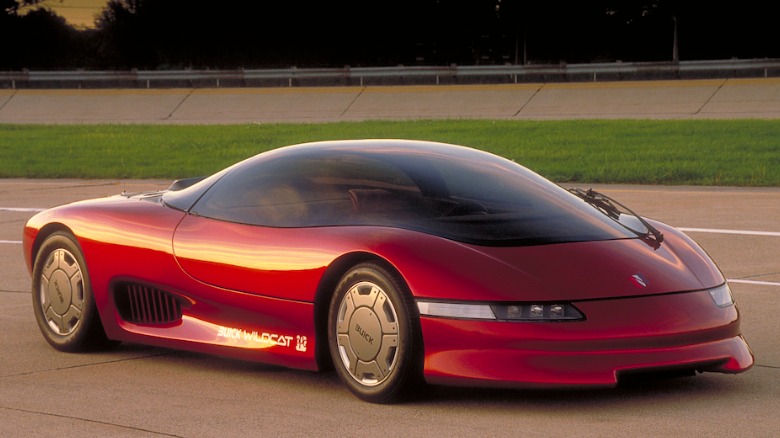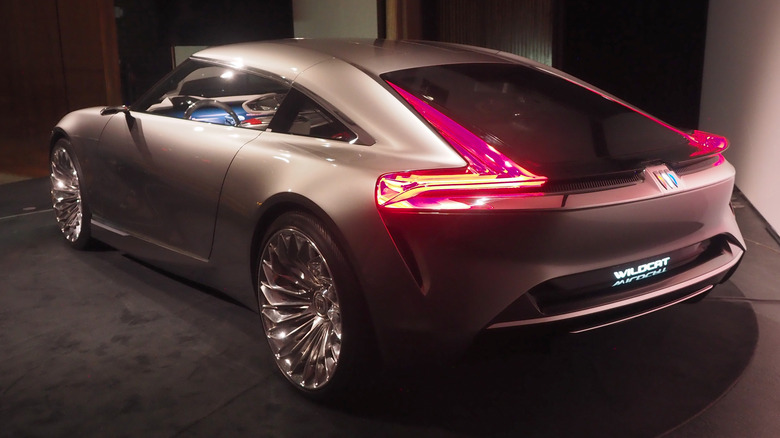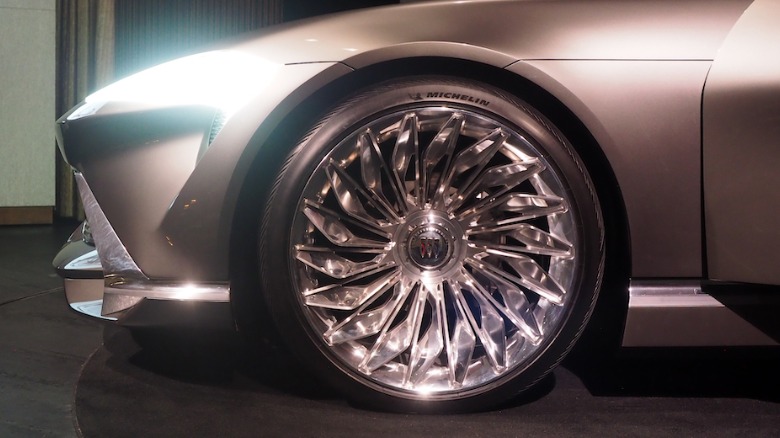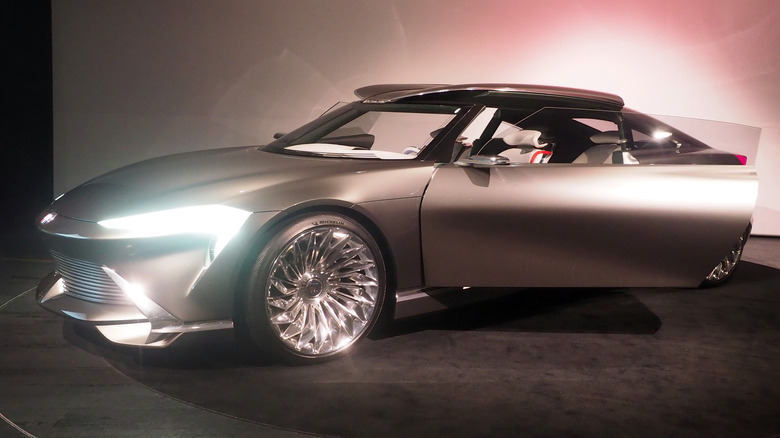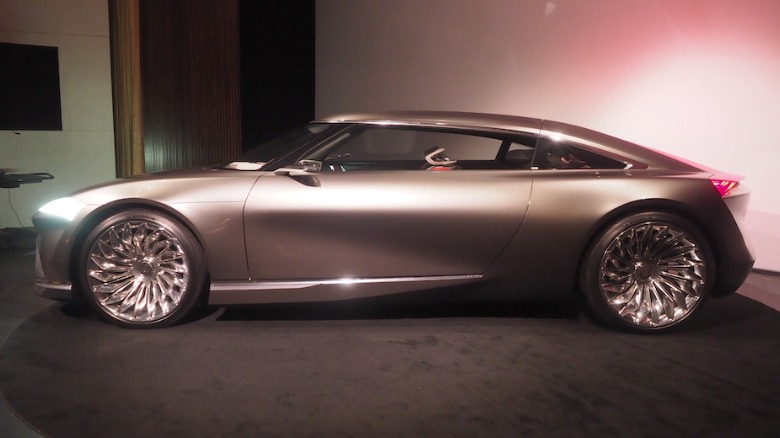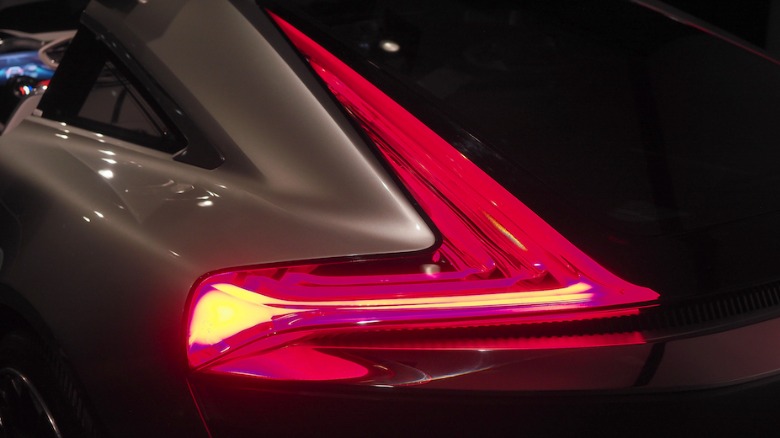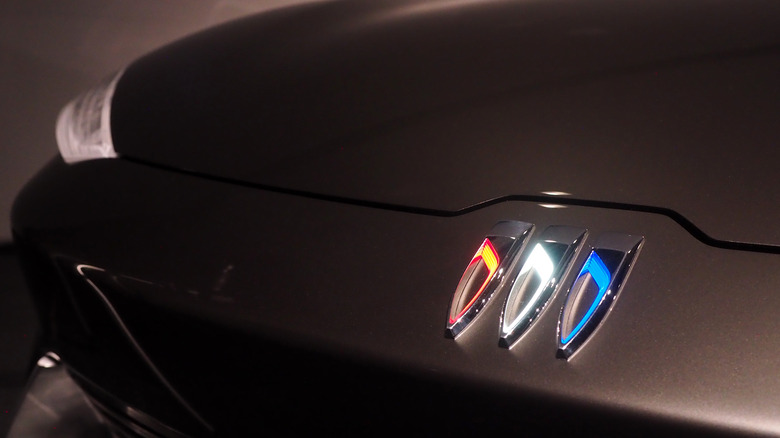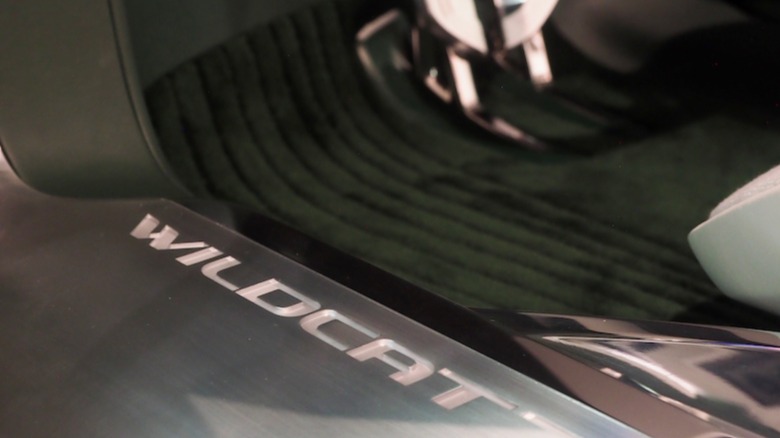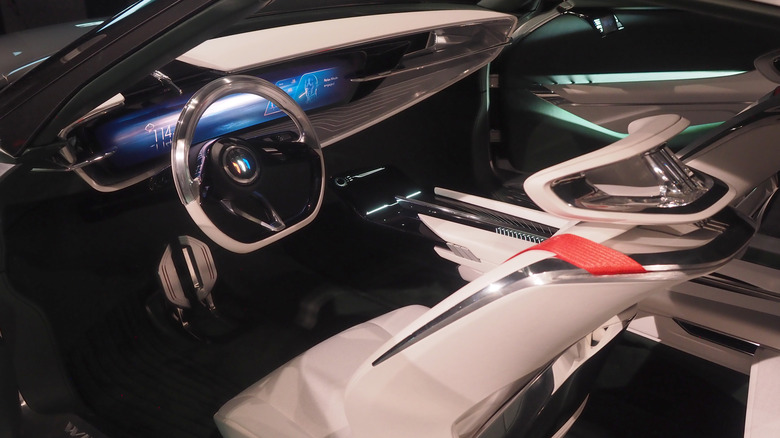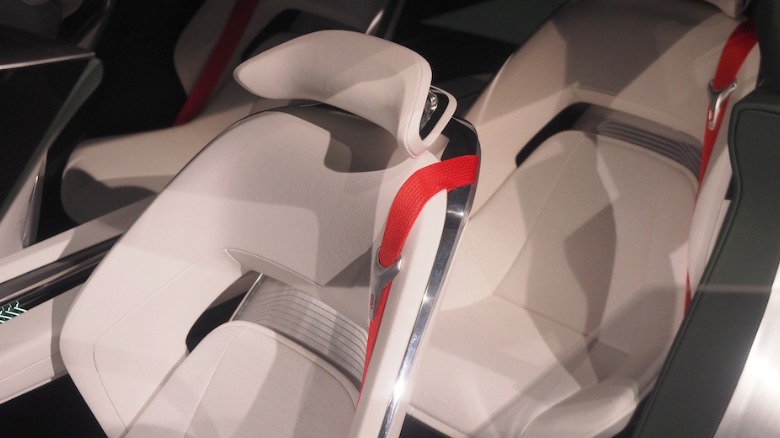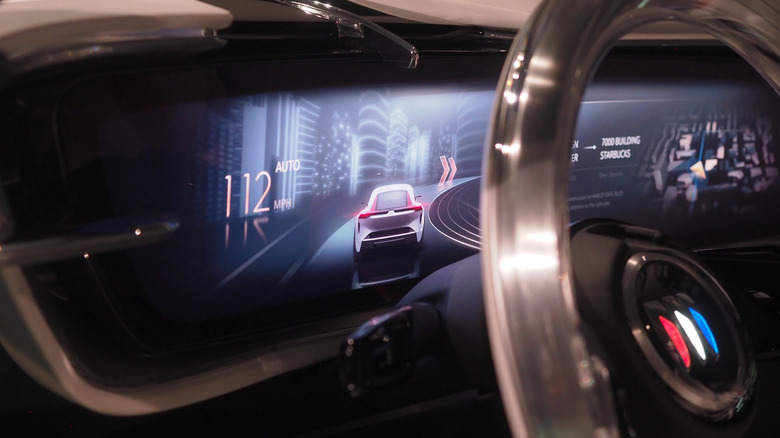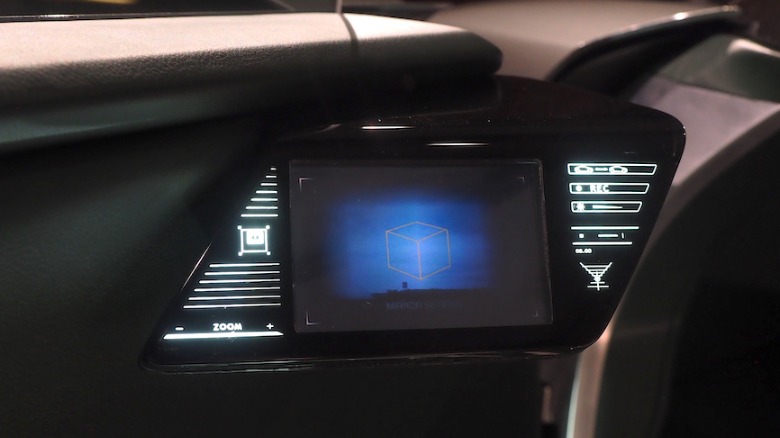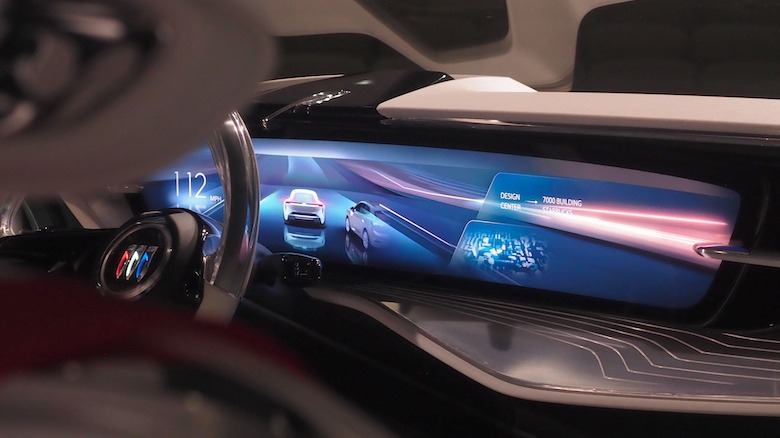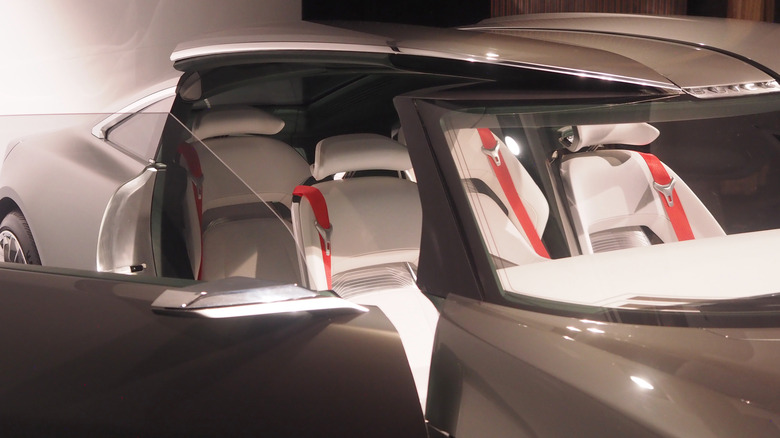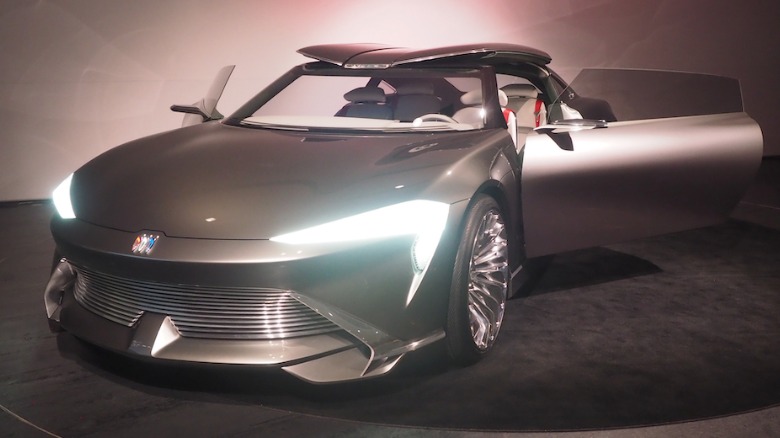This Buick Wildcat EV Is The Astonishing Electric Car Concept Nobody Expected
It's fair to say the Buick Wildcat EV doesn't look like your typical Buick. Then again, defining what's normal for General Motors' upscale-but-not-outlandish nameplate has been a trickier matter in recent years. Ascendant in China and looking ahead to an all-electric future, Buick still lacks even a mild hybrid in its U.S. range. To say this head-turning EV concept is dramatically different, then, is a huge understatement.
Though Buick may have come some way from its fairly staid reputation of old, it's still easy to forget that the automaker has been responsible for some of the more timeless concept cars through the years. 2016's Avista, for example, proved definitively that Buick could pen a sleek, seductive grand tourer coupe; a year before, the Avenir demonstrated the same with a four-door sedan.
Still, the concepts that bore the Wildcat branding have arguably been the most important in Buick's history. The badge is no stranger to automotive enthusiasts, though Buick has used it sparingly over the years. A handful of times in the 1950s, as the company signaled its elegant and striking new design language, and then again in 1985 as a jaw-dropping mid-engine supercar.
Even today, that eighties coupe looks otherworldly with its cab-forward proportions and enormous articulated canopy. Today's Wildcat EV, though, could have even greater staying-power.
Coupe style, Ultium heart
Long, low, and sleek, it's a far cry from the crossovers and SUVs that make up the bulk of Buick's current range. It's also entirely electric, another example of how General Motors' Ultium architecture can be reshaped for different types of EV.
Ultium may have taken a while to reach the market, but we're finally seeing just what GM's platform can do. Designed to be super-flexible, it supports front, rear, and all-wheel drive vehicles, with the potential for more than the usual two electric motors. A scalable pouch-type battery design means its range can be adjusted, depending on market demands, vehicle size, and target price. In Cadillac's Lyriq SUV, for instance, a 100 kilowatt hour battery is rated for up to 312 miles on a charge. With a battery more than twice that size, meanwhile, the bigger, heavy GMC Hummer EV could go up to 329 miles.
The Wildcat EV is, of course, more focused on design than propulsion. Buick isn't talking about power, range, or details of that sort; the concept car can drive, though only at speeds of up to around 30 mph, with more focus on moving it from one exhibition space to the next rather than testing out the grip of the custom Michelin tires. Instead, the goal here is to explore how electrification can help upend what we think of as — and expect from — traditional vehicle design.
Concept styling has production intent
The front is shark-like and purposeful, reinterpreting Buick's current grille and pushing it down low into the fascia. The automaker says it's a style change upcoming production vehicles will copy, along with the distinctive LED lighting. The windshield wraps around into the side glass, eschewing the typical A-pillars, and then that all flows into the fastback rear. A slightly kinked roofline ensures both second row headroom and a sizable trunk, too.
Vast, 18-spoke wheels have a faintly retro, turbine-inspired design. They, along with the roofline, are a nod of sorts to aerodynamics, though Buick says the concept itself wasn't wind tunnel tested. Leaning into the "grand tourer EV" idea, not only are the doors powered — opening and closing at the touch of a button — but sections of the roof hinge up like butterfly wings too, making it much easier to slide into or exit the cabin.
Like the headlamps, the rear light clusters rely on cutting-edge Micro LED technology. It paves the way to smooth and intricate animations: start the Wildcat EV up, for instance, and light appears to flood down through the taillamps like a lava flow. A glowing Buick logo sits in-between, in theory — though not functional on this concept — sliding up to reveal the charging port for the EV's battery.
A new Buick badge and a rebooted nameplate
It's not quite the Buick logo you might expect, however. As well as presaging Ultium's arrival, the Wildcat EV also debuts the latest reinterpretation of the automaker's badge. Gone is the outer ring, while the red, white, and blue shields are now positioned horizontally level rather than staggered.
That new design will appear on production cars from 2023, replacing the current circular badge inside and out. Buick also has a new nameplate in mind, to help distinguish its electric models from the current range.
They'll launch under the Buick Electra brand, rebooted for Ultium EVs after last being used between 1959 and 1990 on the automaker's flagship sedan. Individual models will get an alphanumeric suffix to indicate the particular series. Buick says its first all-electric Electra will arrive in 2024, though it's not ready to discuss just what style of vehicle we can expect then.
The cabin shows electrification's big advantage
Whatever it looks like on the outside, Buick could do worse than borrowing liberally from the Wildcat EV's interior for its first production electric model. The concept is a spacious 2+2 layout, with four stylized seats that each "float" above the cabin floor from a similarly-cantilevered central console. That's part of the concept's main flourish: demonstrating the ways that ousting internal combustion from the equation can unlock new design options.
The dashboard, for example, also looks as though it's floating. Stand outside and look down through the windshield, and you can see right through gaps into the front footwells. Just how much of that will be production-ready remains to be seen, though Buick says it's exploring potential ways to integrate safety-critical things like airbags without necessarily compromising on aesthetics.
Most of the color scheme is cool and minimalistic, with the seats a crisp white against the gloss-black of the touchscreen surfaces. The contrasting deep green of the carpet and leather door and roof liner is a pleasing touch, though, as are the bright orange seatbelts. There are some great retro details too, the steering wheel being slim and tactile rather than automatically subscribing to the idea that "sporty" needs to be thick and chunky.
Ultra Cruise will take the wheel
It's a long way from the sober, borderline-bland dashboard that's found in most Buick models right now. Digital instrumentation includes a sizable display for the driver, individual control pods built into the doors — with fonts and graphics that manage to channel a little of KITT from "Knight Rider" — and an angled touchscreen in the center console. Buick is experimenting with tech you don't necessarily see, though, too.
Biometric sensors to measure heart rate are integrated into the seats, helping to track when the driver might be stressed or frustrated. The Wildcat EV can then automatically adjust the ambient lighting, climate control, and even release aromatherapy scents to encourage a sense of calm. A "Zen Mode" seems tailor-made for catching sixty winks while the coupe is plugged into the nearest DC fast charger, dimming the cabin lights, switching on the massage seats, and activating the most relaxing fragrance through the HVAC system.
Around the steering wheel, meanwhile, are a whole bunch of driver-monitoring sensors. They're primarily intended for Ultra Cruise, General Motors' upcoming semi-autonomous hands-free driving system. Like with Super Cruise — which is actually still not available on a Buick production model — it'll use attention tracking to make sure whoever is at the wheel is paying attention, even if they don't have to steer themselves. Ultra Cruise, though, promises door-to-door functionality in 95% of driving scenarios. It'll debut on Cadillac models in 2023.
Big EV goals, but no Wildcat for dealerships
Buick, like the rest of GM's brands, has big plans for electrification. It wants to go all-EV by 2030, gradually phasing out its current, gas-powered models as it debuts new electric versions. The Electra badge and the new logo will be a big part of that, but so will design elements previewed by the Wildcat EV concept.
That'll include things like the badging, the new trapezoidal grille, and an uptick in high-tech features like animated LED lighting. Part of what makes the Wildcat EV so intriguing is that — unlike with many concept cars — none of the design features or technologies are beyond what's possible today. Even features like semi-autonomous driving are remarkably practical, at odds with the tendency of automakers to make huge promises in the chase for headlines.
How much of that graduates to cars in actual dealerships really comes down to budget and the demands of the market. Sadly, Buick has no plans to put the concept you see here into production. Neither will it confirm if there's a Buick coupe or GT on the roadmap though, given the automaker currently offers nothing but crossovers and SUVs, we're not getting our hopes up.
